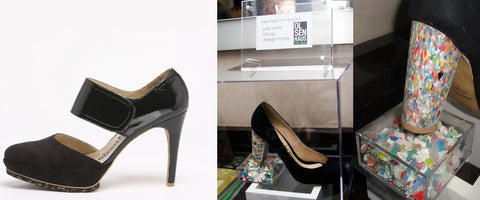Manufacturing & Materials

Olsenhaus is 100% singularly and uncompromisingly vegan for the animals and the planet, not trend.
We operate the business in truth and transparency.
MANUFACTURING:
Olsenhaus manufactures in Mexico,India and Spain
The main factory is in Mexico. Olsenhaus has produced there since the
beginning of company, over 6 years ago. All facilities are modern, clean
and family-run businesses.
The factory in Mexico produces their own in-house brand and Olsenhaus.
The factory in Spain produces vegan shoes.
This factory has started using more and more of the materials Olsenhaus uses,
in replacement of leather.
The factory in India is a vegan owned and operated facility.
Olsenhaus owner, Elizabeth Olsen, personally inspects factories for fairtrade
principals in wages, treatment of employees and working condition environment.
Production is made-to-order, meaning we produce what is ordered by wholesale accounts, plus a little extra.
We do not mass produce each style in the thousands, we make approximately 50-100 pairs per style each season.
We transport goods mostly by ground, sometimes by air or by boat if time allows.
Photos of factory in Mexico:

MATERIALS:
Materials used for Olsenhaus are 100% vegan. There are no animal skins, animal
products, by-products or testing used in the making of our products.
Olsenhaus uses sustainable, renewable plant-based materials, as well as
man-made materials.
We mix natural materials such as linen, cotton, canvas, bamboo,hemp,
cork and wood with low impact synthetics, mainly ultra-suede, velvet
microfibers, nylon and faux leather. Our linings are a
synthetic eco-lining and soles, composite rubber. Glues are rubber-based and
vegan and paint is vegan and non-toxic.

Faux leather is not plastic; it is made from a compound of carbon, hydrogen and nitrogen.
Other types are made from cotton with a vinyl or polyurethane coating. Many synthetics
are at least partially biodegradable- the cotton base will biodegrade, whereas leather will
chip, crack and appear to start decomposing. There are some 100%
biodegradable vegan leathers in existence.
Olsenhaus continually searches for more advanced materials and processes.
We utilize recycled, up-cycled and innovative materials as much as possible.
We have used an up-cycled ultra suede made from recycled industrial waste from
a television factory in Japan. The process takes the polyester waste from the
making of the screen and creates a non-woven material that is water-resistant,
crack-proof and color fast.

Shoe on left:
Upper: Up-cycled industrial waste ultra-suede
Platform: Cork platform
Sole: Recycled rubber-tire and saw-dust
Shoe on right:
Upper: Up-cycled industrial waste ultra-suede
Heel: Recycled water bottles, milk jugs and plastic detergent bottles
On man-made materials:
From start to finish, the amount of energy, space, labor required and waste created
to produce a leather hide is 20 times greater than the production of a synthetic.
Producing leather requires transportation to feed the animals, removal of waste,
electricity for housing operation, transportation to the slaughterhouse, the slaughter,
then to tannery, which creates an enormous amount of toxic waste. The run-off from
tanneries pollutes the land, air and water supply, which has been shown to cause
numerous diseases in humans.
Synthetic materials and plant-based materials account for far less pollution and use
only a fraction of the energy when compared to leather. Most synthetics available
today are flexible,breathable and biodegradable. In addition these materials are
consistent in size, shape and thickness.Therefore the entire piece is utilized, creating
little waste, unlike leather which has an enormous amount of waste.
For information on leather, click here to go to " About Leather"
